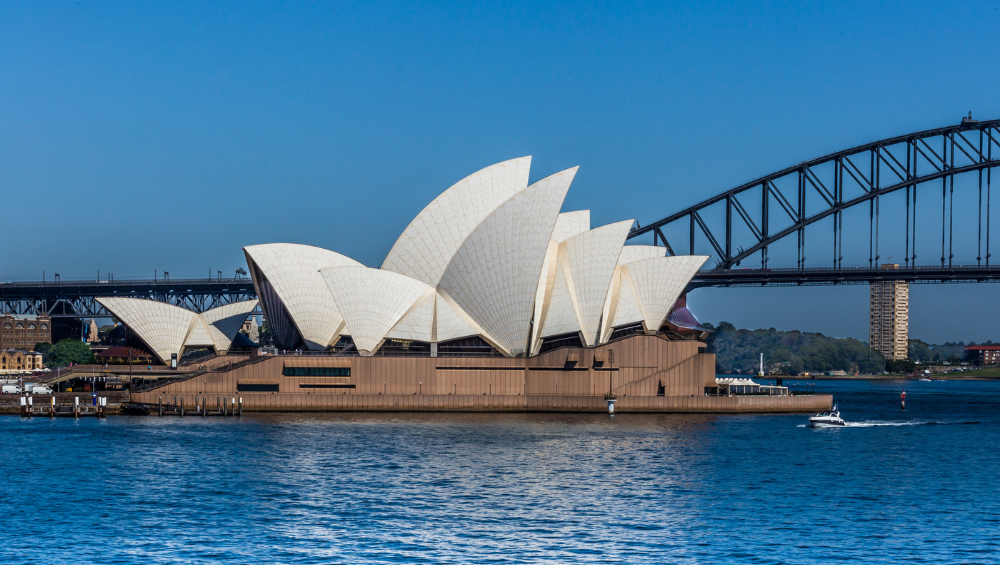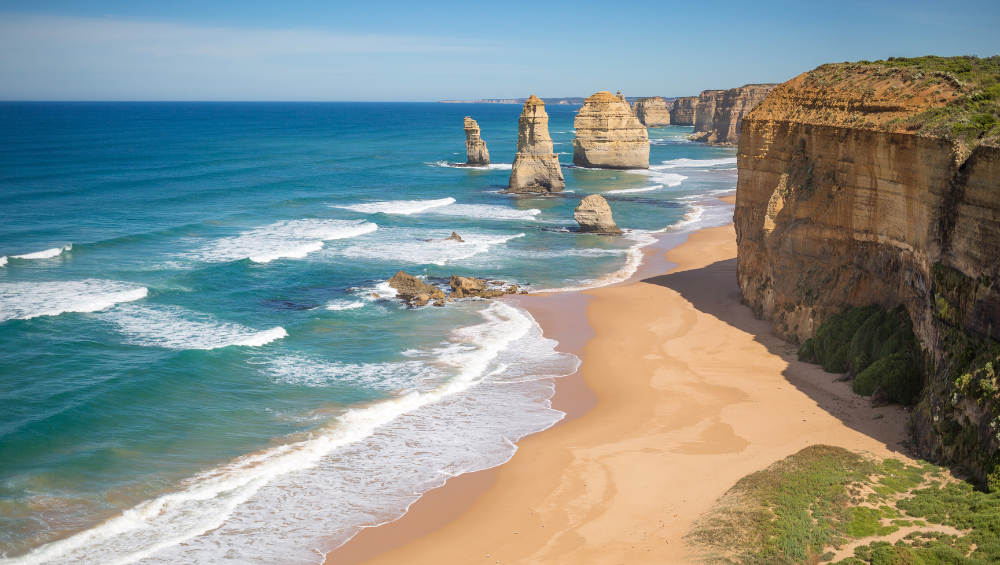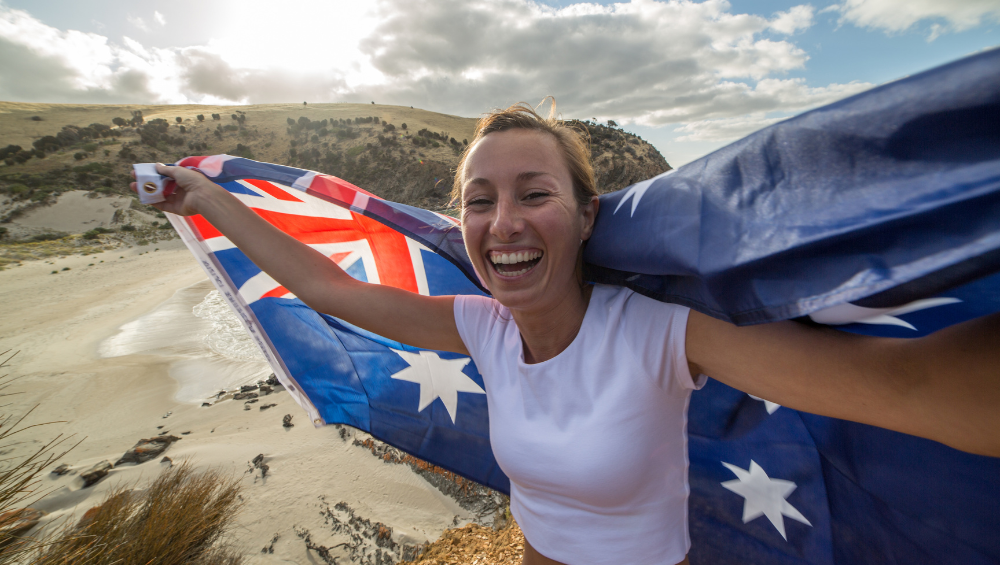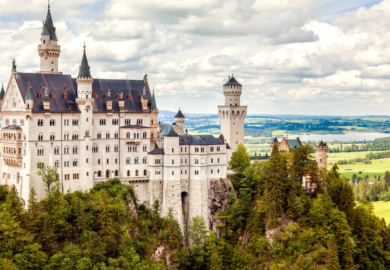Table of Contents
So, you have probably been putting off travel in Australia because it is expensive, right? Without an eye on budget travel in Australia, it can be expensive and time-consuming. If you are planning (or pining!) for Australia, then you need to make sure that you are focused on budget travel in Australia from a money and time standpoint.
Australia, often referred to as the Land Down Under, is a dream destination for travelers worldwide. With its stunning landscapes, diverse wildlife, and vibrant cities, Australia offers a plethora of experiences waiting to be discovered. The good news is that you don’t need to break the bank to explore this beautiful country. In this guide, we’ll show you how to experience the best of Australia on a budget, from the bustling cities to the remote outback.
Why Travel in Australia on a Budget?
Before we dive into budget travel in Australia tips, let’s first understand why traveling in Australia on a budget is the way to go. While it may seem like an expensive destination at first glance, there are plenty of ways to make your trip more affordable. Plus, by embracing budget travel, you’ll have the opportunity to experience Australia like a local and truly immerse yourself in the culture.
Exploring Travel in Australia Without Emptying Your Wallet
1. Prioritize Off-Peak Travel
Australia’s peak tourist season falls during the summer months (December to February). Traveling during the shoulder or off-peak seasons can lead to significant cost savings on accommodation and attractions. Consider visiting in spring (September to November) or autumn (March to May) for milder weather and fewer crowds.
2. Cook Your Meals
Dining out in Australia can be expensive, but you can save money by cooking your meals. Many hostels and budget accommodations offer communal kitchens. Take advantage of local markets and grocery stores to buy fresh produce and save on food costs.
3. Explore Free & Low-Cost Activities
Australia offers an abundance of free and budget-friendly activities. Enjoy picnics in scenic parks, take advantage of free walking tours in cities, and explore the many public beaches and hiking trails without spending a dime.
4. Use Public Transportation
Australia has an extensive public transportation network, including buses, trams, and trains. Utilize public transport passes and cards for discounted fares when traveling within cities. Consider taking overnight buses or trains to save on accommodation costs.
5. Opt for Budget Accommodations
Choose budget-friendly accommodations like hostels, motels, campgrounds, or budget-friendly hotels. You can also consider Airbnb or couchsurfing for unique and cost-effective lodging options.
6. Plan Your Itinerary Carefully
Plan your route strategically to minimize travel in Australia distances. Australia is vast, and long journeys can be costly and time-consuming. Focus on exploring specific regions to make the most of your budget and time.
7. Take Advantage of Discount Cards
Look for discount cards and passes that provide savings on attractions, tours, and transportation. Examples include the Australia Sightseeing Pass and city-specific cards like the Melbourne Attraction Pass.
8. Embrace Camping & Outdoor Adventures
Australia’s natural beauty beckons outdoor enthusiasts. Camping is an affordable way to experience the great outdoors. Many national parks offer campsites, and you can rent camping gear if needed.
9. Travel Light and Pack Wisely
Avoid excess baggage fees by packing light. Bring versatile clothing suitable for various weather conditions. Additionally, consider investing in a reusable water bottle to save on buying bottled water.
10. Research and Book in Advance
Researching and booking in advance can lead to significant cost savings. Look for early bird deals on flights, accommodation, and activities. Consider travel in Australia during the weekdays instead of weekends when prices are typically higher.

Australia Premier Destinations without Breaking the Bank
Experiencing Australia’s premier destinations on a budget is entirely possible with strategic planning and savvy decision-making. Despite the perception of Australia as an expensive destination, you can take in the country’s stunning landscapes, vibrant culture, and unique wildlife encounters while keeping your spending in check. Stay tuned as we reveal these affordable yet fulfilling travel in Australia experiences in the Land Down Under.
Sydney
Sydney, Australia’s largest city, is famous for its stunning harbor, iconic landmarks like the Sydney Opera House and Sydney Harbour Bridge, and beautiful beaches like Bondi and Manly. Explore free attractions like the Royal Botanic Garden and take a coastal walk from Bondi to Coogee Beach.
Melbourne
Melbourne is known for its vibrant arts scene, coffee culture, and laneways filled with street art. Stroll through Federation Square, visit the National Gallery of Victoria, and explore the Queen Victoria Market for budget-friendly eats.
Brisbane
Brisbane offers a laid-back atmosphere along the Brisbane River. Enjoy a free CityHopper ferry ride, visit the South Bank Parklands, and take a day trip to the nearby Lone Pine Koala Sanctuary.
Cairns
Cairns is the gateway to the Great Barrier Reef. While snorkeling and diving can be expensive, you can still enjoy the Cairns Esplanade, swim in the lagoon, and explore nearby rainforests on a budget.
Adelaide
Adelaide is known for its wine regions, such as the Barossa Valley. Visit the Adelaide Botanic Garden, take a scenic drive to the Adelaide Hills, and enjoy free city attractions like the Art Gallery of South Australia.
Perth
In Perth, relax on beautiful beaches like Cottesloe or Scarborough. Explore Kings Park and Botanic Garden, take a stroll in Fremantle, and enjoy the city’s many free festivals and events.
Darwin
Darwin offers access to the natural wonders of the Northern Territory. While visiting Kakadu National Park can be a splurge, you can explore the city’s waterfront precinct, Mindil Beach Sunset Market, and nearby Litchfield National Park.
Hobart
In Hobart, discover the history of Tasmania at the Tasmanian Museum and Art Gallery. Explore Salamanca Place, take a ferry to MONA (Museum of Old and New Art), and embark on budget-friendly hikes in the surrounding wilderness.
National Parks for Travel in Australia
1. Kakadu National Park, Northern Territory
- What to See: Kakadu is renowned for its rich Indigenous culture, ancient rock art, and diverse ecosystems. Explore wetlands, waterfalls, and gorges, and don’t miss the iconic Yellow Water Billabong for wildlife sightings.
- Rules and Best Practices: Respect Indigenous cultural sites, follow safety guidelines near water bodies, and check for seasonal closures and weather conditions.
2. Uluru-Kata Tjuta National Park, Northern Territory
- What to See: Witness the majestic Uluru (Ayers Rock) and the striking Kata Tjuta (The Olgas) at sunrise or sunset. Learn about the spiritual significance of these landmarks to the Anangu people.
- Rules and Best Practices: Follow the guidelines for respectful behavior at Uluru, stay on designated walking paths, and be prepared for extreme desert conditions.
3. Daintree National Park, Queensland
- What to See: Explore the world’s oldest tropical rainforest, home to diverse plant and animal species. Visit Mossman Gorge for a refreshing swim and take a guided tour to learn about the area’s Indigenous heritage.
- Rules and Best Practices: Stay on marked trails, be cautious of wildlife, and support eco-friendly tourism practices to protect the fragile ecosystem.
4. Cradle Mountain-Lake St Clair National Park, Tasmania
- What to See: Discover the rugged beauty of Cradle Mountain, pristine alpine lakes, and enchanting forests. Hike the Overland Track or opt for shorter walks with stunning vistas.
- Rules and Best Practices: Register for hikes, carry essential gear, and be mindful of Tasmania’s changeable weather conditions.
5. Blue Mountains National Park, New South Wales
- What to See: Admire the dramatic sandstone cliffs, eucalyptus forests, and cascading waterfalls in the Blue Mountains. Explore the Three Sisters rock formation and enjoy scenic hikes.
- Rules and Best Practices: Stay on marked trails, take care when using fireplaces, and respect wildlife and vegetation.
6. Flinders Ranges National Park, South Australia
- What to See: Witness the striking landscapes of the Flinders Ranges, including red rock formations, rugged gorges, and abundant birdlife. Take a 4WD journey through the park.
- Rules and Best Practices: Obtain permits for camping and driving, be aware of cultural heritage sites, and pack sufficient water for remote areas.
7. Litchfield National Park, Northern Territory
- What to See: Enjoy natural plunge pools, waterfalls, and magnetic termite mounds in Litchfield National Park. Explore the park’s easy-to-access attractions on self-guided tours.
- Rules and Best Practices: Swim only in designated areas, observe crocodile warning signs, and take your rubbish with you.
Best Practices for Visiting National Parks in Australia
- Observe “Leave No Trace” Principles: Respect the environment by taking your trash with you, staying on marked trails, and not disturbing wildlife or vegetation.
- Check Park Websites: Before visiting, check official park websites for updates on park closures, fire bans, and safety alerts.
- Permits and Entry Fees: Some national parks require entry fees or camping permits. Purchase these in advance or at park entry points.
- Safety First: Follow safety guidelines for swimming, hiking, and camping. Be prepared for extreme weather conditions, especially in remote areas.
- Respect Indigenous Sites: Many national parks in Australia have cultural significance to Indigenous communities. Respect sacred sites and follow any cultural protocols.
- Campfire Regulations: If camping in designated areas, follow fire regulations carefully, and use provided fireplaces or portable gas stoves for cooking.
- Wildlife Interaction: Admire wildlife from a safe distance and never feed them. Feeding can harm animals and disrupt their natural behaviors.
- Stay Informed: Stay updated on weather forecasts, fire conditions, and park closures during your visit.
By adhering to these rules and best practices, you can help preserve the natural beauty of Australia’s national parks for future generations to enjoy. These pristine environments offer budget-friendly opportunities for outdoor adventures and the chance to connect with Australia’s unique ecosystems and Indigenous cultures.

Australia’s Coastal Gems: Beach Escapes on a Budget
Australia’s coastline stretches for thousands of kilometers, offering an abundance of pristine beaches that cater to all tastes, from surfing enthusiasts to sunbathers seeking relaxation. In this section, we’ll introduce you to some of Australia’s most breathtaking beaches, each with its unique charm and attractions. Whether you’re a water sports enthusiast or simply looking for a place to unwind, these budget-friendly beach destinations in Australia have something for everyone.
Beaches Worth Exploring
1. Bondi Beach, New South Wales
- What to See: Bondi Beach is famous for its golden sands, vibrant atmosphere, and excellent surfing conditions. Enjoy coastal walks, beachfront cafes, and the iconic Bondi Icebergs Pool.
2. Whitehaven Beach, Whitsunday Islands, Queensland
- What to See: Whitehaven Beach is known for its dazzling white silica sand and crystal-clear waters. It’s a paradise for beachcombers, snorkelers, and those seeking postcard-perfect views.
3. Byron Bay Beaches, New South Wales
- What to See: Byron Bay boasts a collection of stunning beaches, including Main Beach, Wategos Beach, and Tallow Beach. Surf the waves, go dolphin spotting, or hike to Cape Byron Lighthouse.
4. Noosa Main Beach, Queensland
- What to See: Noosa Main Beach offers safe and gentle waves, perfect for swimming and learning to surf. Stroll along the vibrant Hastings Street for shopping and dining.
5. Manly Beach, New South Wales
- What to See: Manly Beach is a popular destination for water sports and beachside dining. Catch a ferry from Circular Quay to Manly and enjoy the scenic journey.
6. Cable Beach, Western Australia
- What to See: Cable Beach in Broome is famous for its sunsets and camel rides along the expansive shoreline. It’s an ideal spot for a tranquil beach experience.
7. Surfers Paradise Beach, Queensland
- What to See: Surfers Paradise Beach is the heart of the Gold Coast. Explore the vibrant nightlife, enjoy street performances, and relax on the sandy shore.
8. Hyams Beach, New South Wales
- What to See: Hyams Beach holds a Guinness World Record for having the whitest sand in the world. It’s a great place for swimming, snorkeling, and picnicking.
9. Lucky Bay, Western Australia
- What to See: Lucky Bay in Esperance is famous for its friendly kangaroos that often sunbathe on the beach. Enjoy stunning coastal views and crystal-clear waters.
Beach Etiquette and Best Practices
- Sun Safety: Protect your skin from the Australian sun by wearing sunscreen, a hat, and sunglasses. Stay hydrated and seek shade during peak sun hours.
- Swim Between Flags: At patrolled beaches, swim between the red and yellow flags for your safety. Lifeguards are trained to help in case of emergencies.
- Respect Marine Life: When snorkeling or diving, avoid touching coral reefs or disturbing marine creatures. Practice responsible reef etiquette.
- Dispose of Rubbish: Always clean up after yourself and dispose of rubbish in designated bins. Keep beaches clean to preserve their beauty.
- Stay Informed: Pay attention to beach safety signs and warnings, especially regarding strong currents or dangerous marine life.
- Follow Local Rules: Some beaches have specific rules, such as no alcohol or pets allowed. Respect these regulations to maintain a peaceful atmosphere.
Australia’s stunning beaches offer endless opportunities for relaxation and adventure. Whether you’re catching waves, exploring marine life, or simply soaking up the sun, these coastal gems provide budget-friendly options for enjoying the Land Down Under’s magnificent coastline.

Budget-Friendly Australia Itinerary
Embarking on a road trip is an excellent way to explore Australia on a budget. This mode of travel in Australia offers flexibility, allowing you to experience the diverse landscapes, wildlife, and culture at your own pace. With careful planning and a focus on cost-saving strategies, you can have an incredible, affordable adventure.
This itinerary provides a guide to experiencing Australia’s unique offerings without breaking the bank, eschewing expensive tourist traps in favor of more wallet-friendly, yet equally enriching, experiences.
Route: Sydney – Canberra – Melbourne – Adelaide – Alice Springs – Cairns
Duration: Approximately 6 weeks
Sydney (Days 1-7)
Start your journey in Sydney, where you can explore iconic landmarks like the Sydney Opera House and Harbour Bridge, relax on beaches like Bondi and Manly, and revel in the Royal Botanic Garden, all for free.
How to Get There: Rent an affordable car for the road trip. Sydney to Canberra is approximately 3 hours by car.
Canberra (Days 8-10)
Next, visit Australia’s capital, Canberra. Notable sights include the Australian War Memorial, National Gallery of Australia, and Parliament House, all offering free entry.
How to Get There: Canberra to Melbourne is a 6-8 hour drive. Consider taking a day to travel in Australia, stopping at quaint towns along the way.
Melbourne (Days 11-18)
In Melbourne, immerse yourself in the arts scene, visit Federation Square, and explore the graffiti-filled laneways. The Melbourne Attraction Pass could help you save on entry fees.
How to Get There: From Melbourne to Adelaide, it’s an 8-hour drive. Consider breaking the journey at the Grampians National Park for a night.
Adelaide (Days 19-23)
Adelaide offers a plethora of free attractions like the Botanic Garden and Art Gallery. Consider a day trip to Barossa Valley for inexpensive wine tasting.
How to Get There: For the long drive from Adelaide to Alice Springs (approximately 16 hours), consider breaking it up with an overnight stop.
Alice Springs (Days 24-26)
In Alice Springs, visit the Cultural Precinct, Anzac Hill, and the Alice Springs
How to Get There: To get to Cairns from Alice Springs, consider a budget-friendly flight. It’s a long drive (approximately 24 hours) otherwise.
Cairns (Days 27-42)
Conclude your trip to Cairns, the gateway to the Great Barrier Reef. Enjoy the Cairns Esplanade, visit the nearby rainforests, and consider a budget-friendly snorkeling tour to witness the reef.
Remember, this route is flexible, and you can add or remove stops based on your interests and budget.
Be Aware Of When You Travel in Australia
- Australia drives on the left side of the road.
- Check road conditions and weather forecasts, especially during the wet season in northern Australia.
- Be mindful of wildlife crossing the roads, especially at dawn and dusk.
- Carry plenty of water and essential supplies, especially in remote areas.
- Always adhere to camping and safety regulations in national parks.
Cost-Saving Tips for Travel in Australia
- Utilize free attractions and activities. Many cities offer free walking tours, bike rentals, and public transportation.
- Cook your meals instead of dining out. Supermarkets are abundant, and you can find affordable local produce at farmers’ markets.
- Stay in budget-friendly accommodations like hostels, campsites, or free camping sites (where permitted). Consider joining a hospitality exchange network for free accommodation.
- Plan your route to avoid toll roads.
- Fill up on gas at supermarkets and truck stops instead of petrol stations near highways.
- Take advantage of discount cards and vouchers when available. For example, the YHA Australia membership offers discounts on accommodations, tours, and activities.
- Research events and festivals happening during your trip. Many are free to attend and offer a unique cultural experience.
By following these tips and utilizing cost-saving strategies, you can have an unforgettable road trip in Australia without breaking the bank.
Rewards of Budget Travel in Australia
Exploring Australia on a budget is not only possible but also incredibly rewarding. By following these tips, prioritizing budget-friendly destinations, and planning your itinerary wisely, you can make the most of your journey through the Land Down Under without emptying your wallet. Australia’s beauty and adventure await, so start planning your budget-friendly adventures.
FAQs About Budget Travel in Australia
Is it possible to travel in Australia on a tight budget?
Yes, it’s possible to explore Australia on a budget by prioritizing low-cost accommodations, cooking your meals, and seeking out free or low-cost attractions and activities.
What is the best time to visit Australia on a budget?
Travel in Australia during the shoulder or off-peak seasons, such as spring and autumn, can help you save on accommodation and avoid crowds.
Are there budget-friendly alternatives to Great Barrier Reef tours?
While snorkeling and diving tours can be expensive, you can still experience the reef by visiting Cairns and exploring the city’s affordable attractions and nearby rainforests or looking for independent local guides.
How can I save on transportation costs in Australia?
Utilize public transportation within cities, consider overnight buses or trains to save on accommodation, and plan your route strategically to minimize long journeys.
Are there budget-friendly options for exploring Australia’s natural beauty?
Yes, you can embrace camping and outdoor adventures in national parks, many of which offer affordable campsites and stunning natural landscapes.



